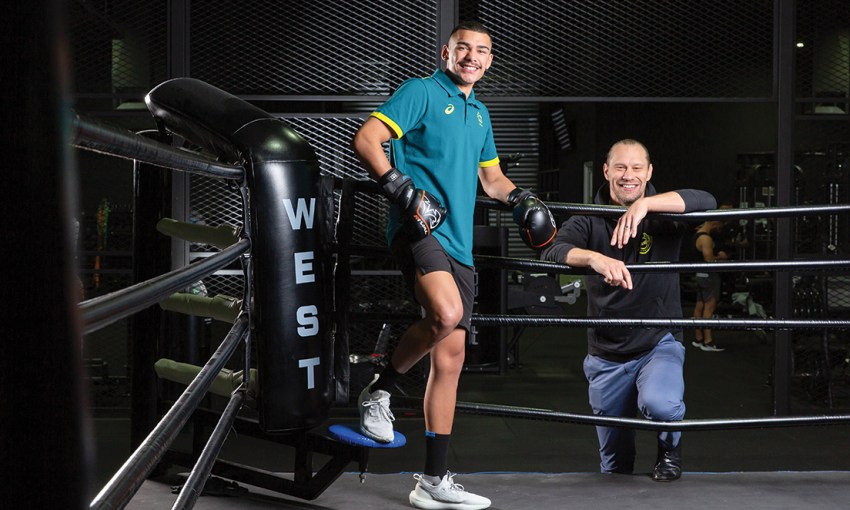South Australia’s top athletes are now in Paris ahead of the Olympic Games, starting on July 26. But before the athletes jetted overseas, SALIFE organised a special meeting between past and present SA Olympians and Paralympians, with the legends of sport sharing words of wisdom not only for competition, but for life away from it, too.
Meet South Australia’s Olympic legends passing the torch to a new generation
Callum Peters and Johan Linde
Boxing
Imagine being targeted with a flurry of knockout blows from a super heavyweight boxer, while your coach tries to shout instructions that are completely drowned out by a raucous crowd packed to within an arm’s reach of the boxing ring. That was where Adelaide boxer Johan Linde found himself during his opening bout at the London 2012 Olympics.
It was bitter-sweet as Johan was knocked out of medal contention — a heartbreaking moment after years of training and preparation. But that night in the Olympic Village, shedding a tear or two, Johan was consoled by Australian cricket legend Steve Waugh, a games ambassador, who helped him “see the forest for the trees”.
“It was about 2am and (Steve) ended up spending about an hour talking with me … he spoke of how he struggled early on as Australian captain,” says Johan.
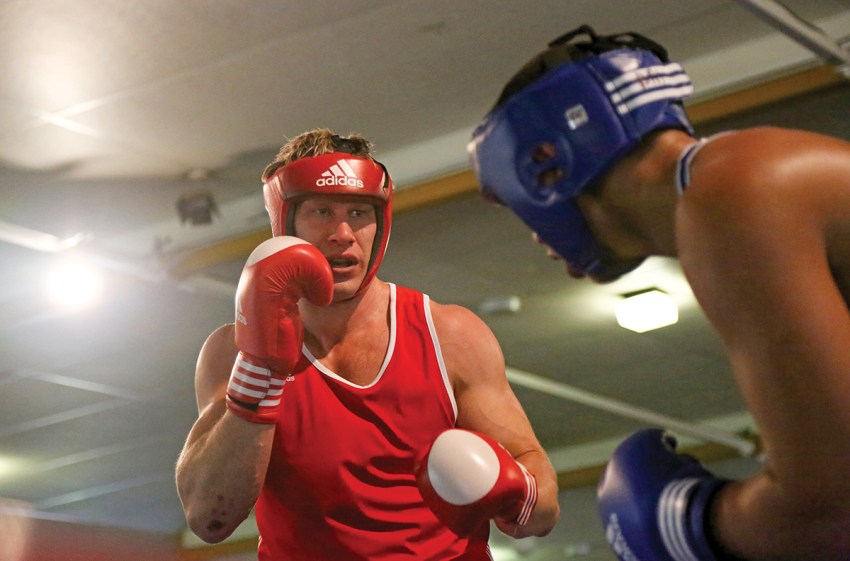
“The Olympics was the best experience in the world, and you never know if you’ll get another opportunity to do it again. I wouldn’t trade it for anything,” says Johan, who continues to compete, even making the leap from amateur to professional just last year at the age of 40.
Johan says he owes everything in his life to boxing. Having lost his father when he was three years old, Johan began spiralling down a troubled route in his teens. But that was turned around at the age of 15 when he walked into an Adelaide boxing club where Olympian James Swan, a groundbreaking Indigenous boxer, was training.
“It just turned my life around for me, this tall scrawny kid, to see these big guys training with blood and sweat, I just loved it,” recalls Johan. “I walked into a boxing club as a skinny 15-year-old kid getting in trouble, finding myself in the youth court, and 15 years later, I walked out as an Olympian with a university degree – boxing transformed my life.”

Johan has also inspired the next generations of boxers including Callum Peters, a 21-year-old athlete from Davoren Park who will compete in his first Olympic Games later this month. “When I was young, Johan was at a training camp doing a talk about his experiences,” says Callum.
“It gave me motivation that if I keep pushing hard, and keep doing what I’m doing, then I could become like him. I’m not as big as Johan yet,” laughs Callum who competes in the light heavyweight division.
“I started boxing when I was nine and-a-half; kickboxing to begin with. In the beginning, it wasn’t about making the Olympics, it was just about following the journey, staying on track and winning, and every tournament, every fight, I just got closer and closer. Every year, the Olympics became more of a possibility,” he says. “I didn’t expect to be where I am now and it still hasn’t really hit me that I’m going to the Olympics, it feels unreal.”
Johan and Callum have taken very different paths to make the Olympic team. Before representing Australia, Johan had already burned out from the sport and took a six-year hiatus while studying, before picking up the gloves again and making a remarkable comeback.
Callum’s rise to the top level has been more linear, for which he credits the help of his father and coach Bradley Peters, and advice from others along the way. “I appreciate Johan’s advice; it’s about all these little pieces that you bring together,” says Callum. “I’ve been working hard for the last 12 years and if I believe in all the hard work and training that I’ve put in, anything’s possible.”
Steph Talbot and Rachael Sporn OAM
Basketball
There’s a special kinship shared between anyone who’s ever pulled on an Opals basketball jersey, yet for South Australian Olympians Rachael Sporn and Steph Talbot there’s an even deeper synergy. Having both grown up in regional towns before soaring to the pinnacle of international basketball, Rachael and Steph both became leading lights in their respective generations of Opals teams.
Now heading into her third Olympic Games and in the prime of her career, Steph is chasing an elusive medal at Paris, having missed out on the podium in her previous Olympic appearances in 2016 and 2021.
“It’s incredible to look back on Rach’s career: the championships and Olympic medals she’s won, if I can just achieve a small amount of that, I’ll be happy,” says Steph.
“It’s great to have a South Australian who has paved the way and can help guide me in the right direction, sharing advice and stories from her journey. We do share a common thread, especially with us both being from the country.”
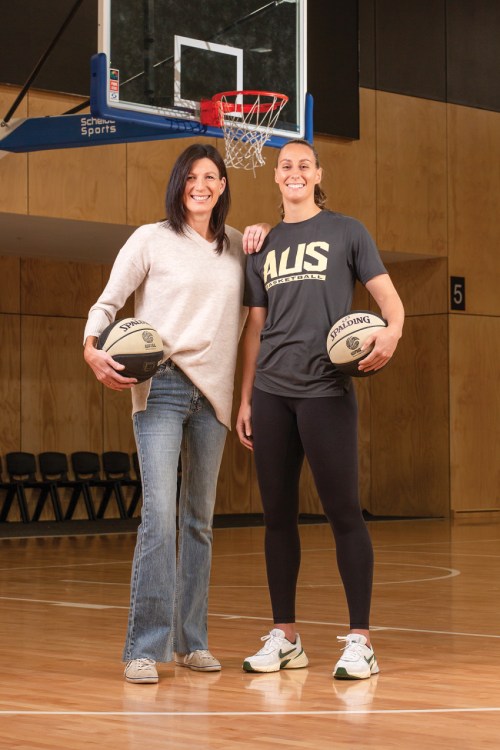
Rachael was part of the history-making Opals team that won the first-ever medal for Australian basketball with bronze at the Atlanta Games in 1996. She went on to help the Opals win silver medals at both Sydney 2000 and Athens 2004. In total, she played an incredible 304 games for the Australian women’s national team.
When Steph takes to the court in Paris, Rachael will be watching every minute of game time, riding the highs and lows as if she were on the court herself.
“It’s hard to explain what it means to be an Opal; the culture is amazing,” says Rachael. “The Opals are admired by the whole country in how they play the game, and always have been, with an unwritten rule or aspiration that you make the medal rounds.
“My favourite Olympic moment is winning our first Olympic medal in Atlanta because we were in a euphoric state having achieved something amazing. That was special.
“I’ve watched Steph’s progress, and I’ve always known that she would become a matchwinner. She’s such an integral part of the Opals and I think Paris is a great opportunity for the girls to get to the medal rounds. I hope it’s a wonderful experience for them.”
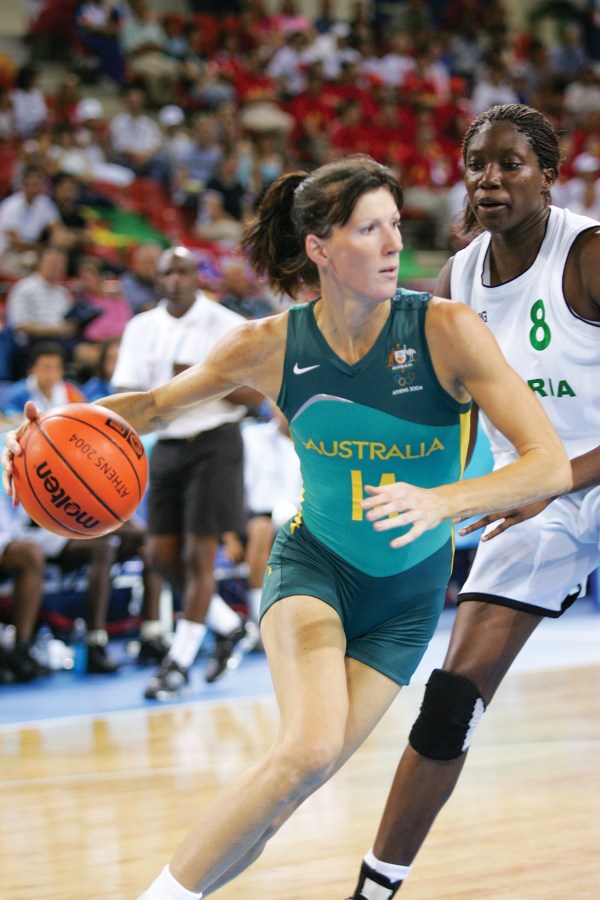
Steph has worked hard to make her way back to the top level, having suffered a torn anterior cruciate ligament in her knee in February 2023. At the time, Steph was at the pinnacle of her career – captaining the Adelaide Lightning, fresh from winning a bronze medal in the FIBA Women’s World Cup in which she was named in the Tournament All-Star Five, and having signed a new WNBA deal with the Los Angeles Sparks.
Her injury sidelined her for an entire WNBA season, but after working on her recovery with the Adelaide Lightning and South Australian Sports Institute, Steph made a stellar comeback to the game she loves, stronger and with new perspective.
“At 29 years old, I’m in my prime, so I have big goals for Paris. I want the team to do well,” says Steph. “It’s an honour to represent my country, but also, for my family and friends and coaches, and everyone who’s helped me to get to where I am. To uphold the legacy created by previous Opals players, and to do it well, means a lot to all of us.”
Anu Francis and Katrina Webb OAM
Paralympians
Anu Francis and Katrina Webb share a lot in common. It was through pursuing elite sport that both were properly diagnosed with their respective neurological conditions – Anu with dystonia, and Katrina with cerebral palsy. But they also share a strong desire to help others.
Anu, 28, is a professional para triathlete, coach, disability peer mentor and support worker, and university student. Meanwhile, Katrina’s life post-sport has seen her become a physiotherapist, leadership consultant, philanthropist and mother of three boys.
And yet acting on empathy can be a hindrance when you’re an elite athlete, as Katrina learned the hard way during her career which spanned three Paralympic Games.
At her first Games in Atlanta in 1996, Katrina took out gold in the 100m and 200m sprints. But in Sydney 2000, she fell short of her personal best. Knowing she could have done better, Katrina learned valuable lessons that saw her return to gold medal-winning form at Athens 2004.
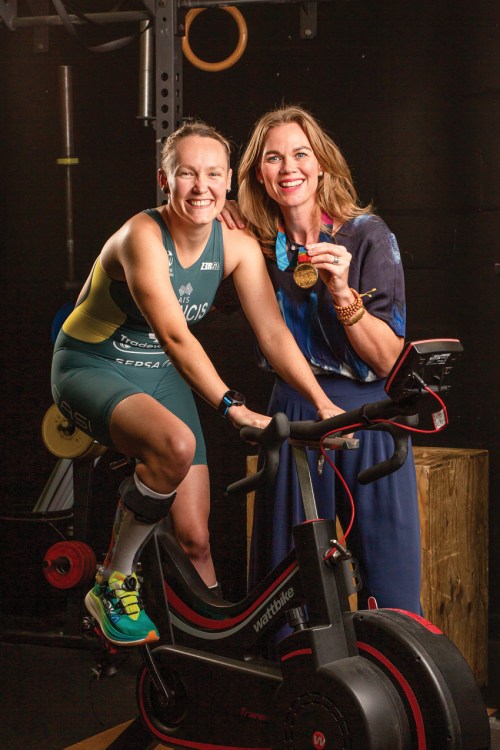
“After winning gold at my first Paralympics, I was often asked to do things. I love to help people, so I’d say yes. But one of the reasons why I underperformed in Sydney was because I was doing too much; I didn’t have clear boundaries,” says Katrina.
“Even in everyday life, it’s okay to say ‘no’ to things that are not aligned with your current priorities, you just need to find a way to do it within your personality. By doing that, I had more time to do all the things that made a difference.”
Anu says she’s approaching the Paralympics with a job to do, but also with reason to celebrate. Anu just missed out on Tokyo as a rower, before transitioning to the sport of triathlon, and overcoming a crash and concussion during a competition last year.
“I’m excited and looking forward to the experience. Hopefully I can back it up like Katrina did and compete at multiple Paralympic Games,” says Anu.
“Sport can feel selfish. Running laps around a field mightn’t seem important, but from that we’ve got the unique power to change the world, which I think is incredible. I was diagnosed through parasports, and it’s helped me not just accept my disability, but embrace it.
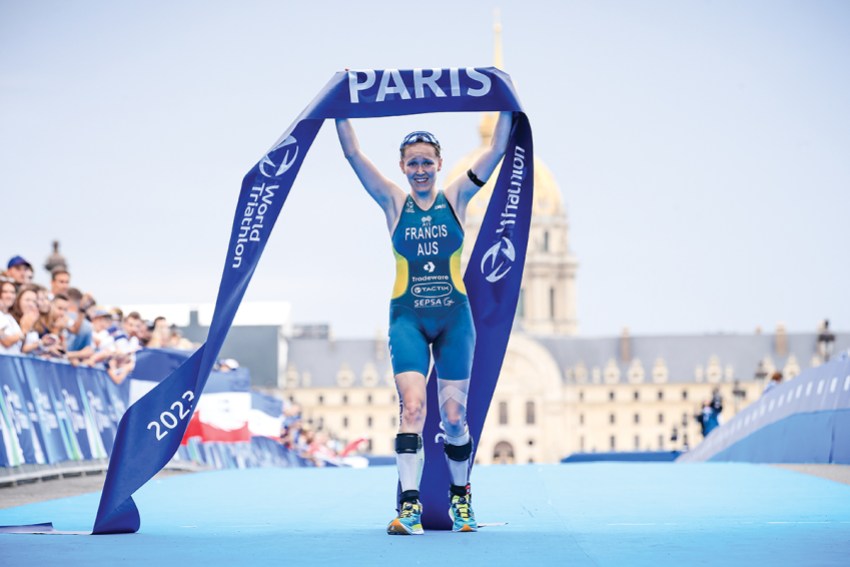
“I hope to use my platform to raise the profile of people with disabilities and in turn reduce societal barriers that are preventing them from reaching their full potential in whichever career and life path they choose.”
There is a time limit on the career of any athlete, and Katrina advises that putting in the time and dedication now will reap rewards in life after sport.
“For a long time after sport I was looking for how I could replicate that gold medal feeling in my life. I trekked up to Everest base camp twice, I walked the Kokoda Track, to try and recreate the feeling of competition,” says Katrina.
“The Paralympics have helped me to celebrate my difference and see it as my strength. When you can do this, you can then pay it forward to others and help them to become their best. For me, that feeling has way surpassed winning gold.”
Matt Temple and Phil Rogers OAM
Swimming
Matt Temple was just three years old when three-time Olympian Phil Rogers retired from swimming in 2003, having become a household name in Australian sport, collecting two Olympic bronze medals and no less than nine gold medals at World Championships and Commonwealth Games across his 20-year career.
Times may have changed, but new generations of swimmers like Matt are keeping alive a legacy built off the tenacious hard work of legends like Phil, who was a key player in a prolific period for the sport alongside names like Kieran Perkins, Grant Hackett and Ian Thorpe.
Having turned 25 last month, Matt is making his own waves leading up to his second Olympic Games. In recent competitions he’s proven he is currently the world’s fastest 100m butterfly swimmer – but it’s an event in which Australia has never won Olympic gold.
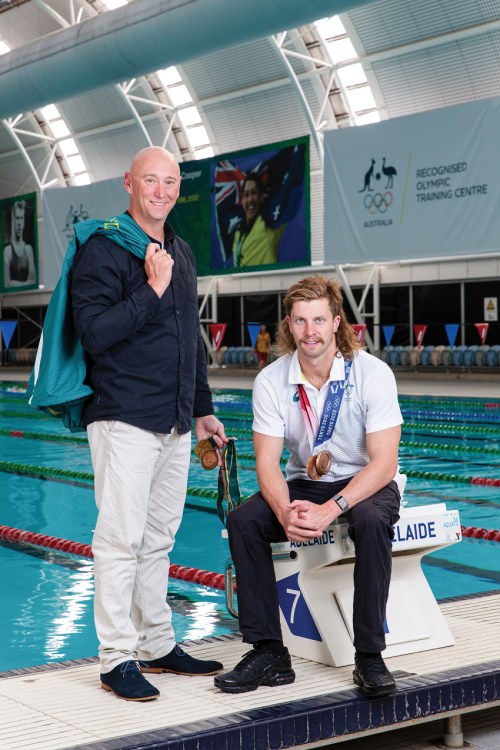
Matt has already won two Olympic bronze medals in relay events at Tokyo in 2021, as well as world championship medals and a silver at the Commonwealth Games and he currently holds the Australian men’s 100m butterfly record. But for Matt, the numbers themselves aren’t important, and he likes to concentrate on being in the moment.
“I’ve been faster this year compared to last year, so that’s exciting. I’m pretty exhausted now, but give me some rest and a month down the track, I’ll be ready to perform and I’m really looking forward to it,” says Matt.
Matt and Phil share a love of team events, having both helped their teams win Olympic medals in relays. Both are also competitors who thrive in the big moments. Phil explains: “The biggest pressure you’ll feel is the pressure you put yourself under, because this is the stuff that makes or breaks your team and your career,” he says.
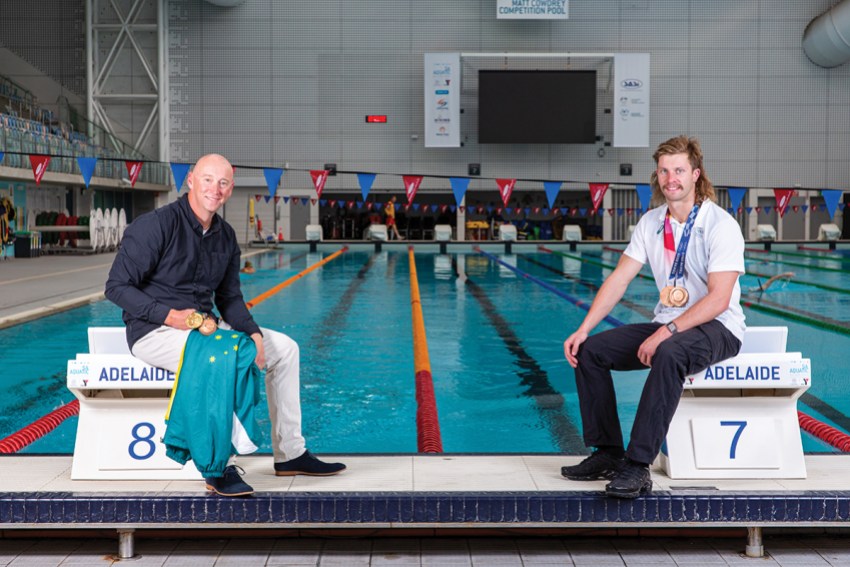
Meanwhile, Matt is coming to terms with being a leader at a young age. “Like Phil, I consider myself as a team man,” he says. “I’d like to leave my mark and be remembered as a hard worker who has a crack once race day rolls around.”
Phil held the Australian 100m breaststroke title for an entire decade: 1990 to 2000. “I was the breaststroker that Australia had. That’s my legacy. I was getting some really good results and I was one of the leaders on the team,” says Phil.
“Times change and people swim faster now than they ever did. We swam faster than the guys in the ’80s, and they swam faster than those in the ’60s. The sport moves on.”
Although times have changed, Phil is pleased to hear Matt comment that his Olympic medals mean more to him than anything else. “Back when I was swimming, there wasn’t a lot of money involved in the sport and it all boils down to the medals,” says Phil. “It’s nice to hear Matt talk about the fact that it still is about the medals at the end of the day. They mean a hell of a lot to me.”
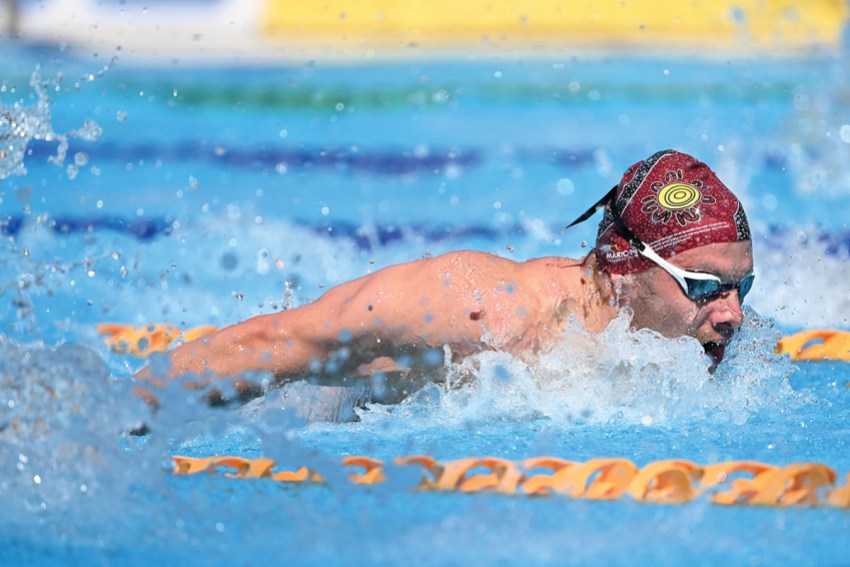
Supported by the South Australian Sports Institute’s swimming program, coaches and health/science experts, Matt is determined to keep alive a legacy founded by Olympians such as Phil.
“There are definitely memories along the way and you’re very grateful for them but it’s all about the medals,” Matt says. “That’s what you’re striving for.”
Olivia Sandery and Jared Tallent OAM
Racewalking
When racewalking gold medallist Jared Tallent retired from athletics after falling short of making the Olympic team in 2021, he realised that his motivation for the sport had waned. The world-class drive that had helped him achieve four medals across three Olympiads, including gold in the 50km racewalk at London 2012, had faded due to injury.
Jared was encouraged to take up coaching, which has since sparked a renewed love for racewalking. For more than two years, Jared has been working with Adelaide racewalker Olivia Sandery, 21, and the pair’s work is paying off with Olivia qualifying for Paris 2024 with stellar results.
“Towards the end of my career, my motivation wasn’t the same as when I was younger,” says Jared. “You could tell by my performances. But that motivation has returned and now I really enjoy coaching others to find success. With the experience of having been there myself, my role is to pass that wisdom to Liv.”
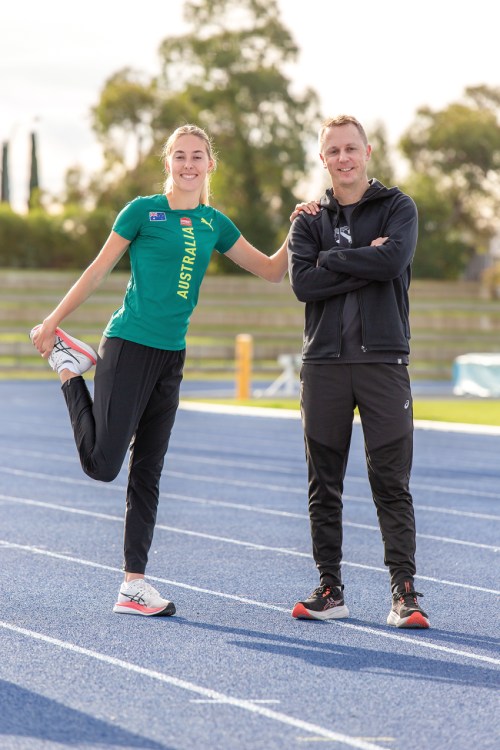
Olivia is the first athlete to train under Jared’s tutelage and the results speak for themselves. Not long after her 20th birthday last year, she became the fourth fastest female racewalker in Australian history.
“Olivia’s progression has been phenomenal,” Jared says. “At Olivia’s age, no one else has been as fast as her, and it’s amazing to think she’s only 21 considering the times she’s been putting down.
“One of the special talents you must develop is being able to perform on the day. Liv is great at that and, in almost all instances, performs her best in the competitions that matter. Her growth has been fantastic, and these first Olympics will be such a great learning experience for her.”
Olivia says it’s her dream to compete at the Olympic level. “Wearing the Australian colours at any level is a big opportunity and something I don’t take for granted, so I’m very excited,” Olivia says.
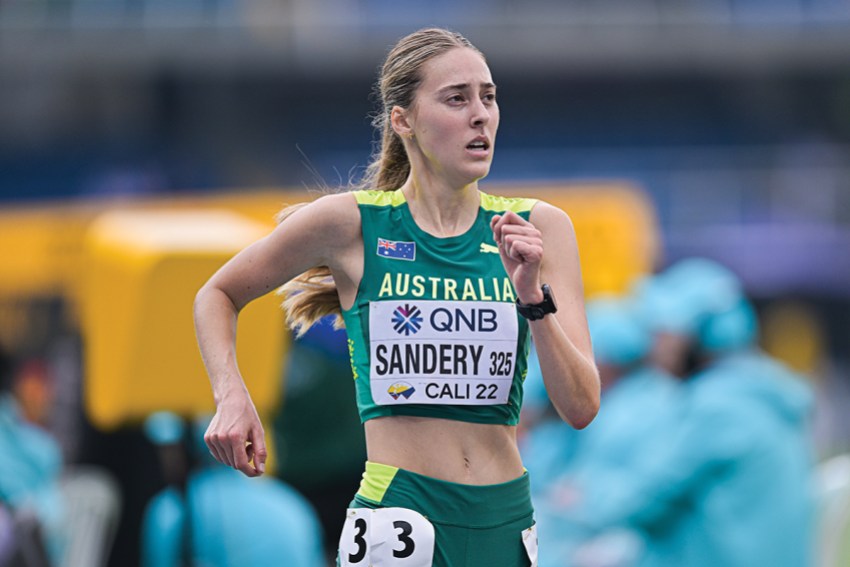
“The 24 hours after a great performance is one of the best feelings in the world. I like that I can push myself as hard as I can and really test the limits and see how far I can go. It’s just me out there; a test of my physical and mental boundaries.
“Jared supports me and prescribes my training, but then he lets me have a say about what’s going on, which is good. So, I think we work well together. Since I began working with Jared, I’ve taken my training up a notch and seen great improvement.”
The physical demands of racewalking are often misunderstood by the public who might be exposed to the sport only once every four years.
As Jared explains: “It is a very physically demanding event, one of the most taxing events in athletics. When Olivia competes, it is 90 minutes of very high intensity competition”.

Olivia’s journey began with Little Athletics at the age of seven, where she enjoyed running events, but became more focused on racewalking as time went on.
Balancing university, training, work and social commitments has meant making sacrifices to compete and train at the top level. And then there’s the mental toughness and competitive nature required to perform on the day.
“I’ve always been a competitive person,” says Olivia. “I’m getting better at handling the pressure of big races. They say pressure is a privilege and that’s something I try to think about when I am feeling it.”
To read this story in print, or to read more stories that highlight the best of Adelaide and South Australia, purchase the July 2024 issue of SALIFE magazine, which is currently on sale.



